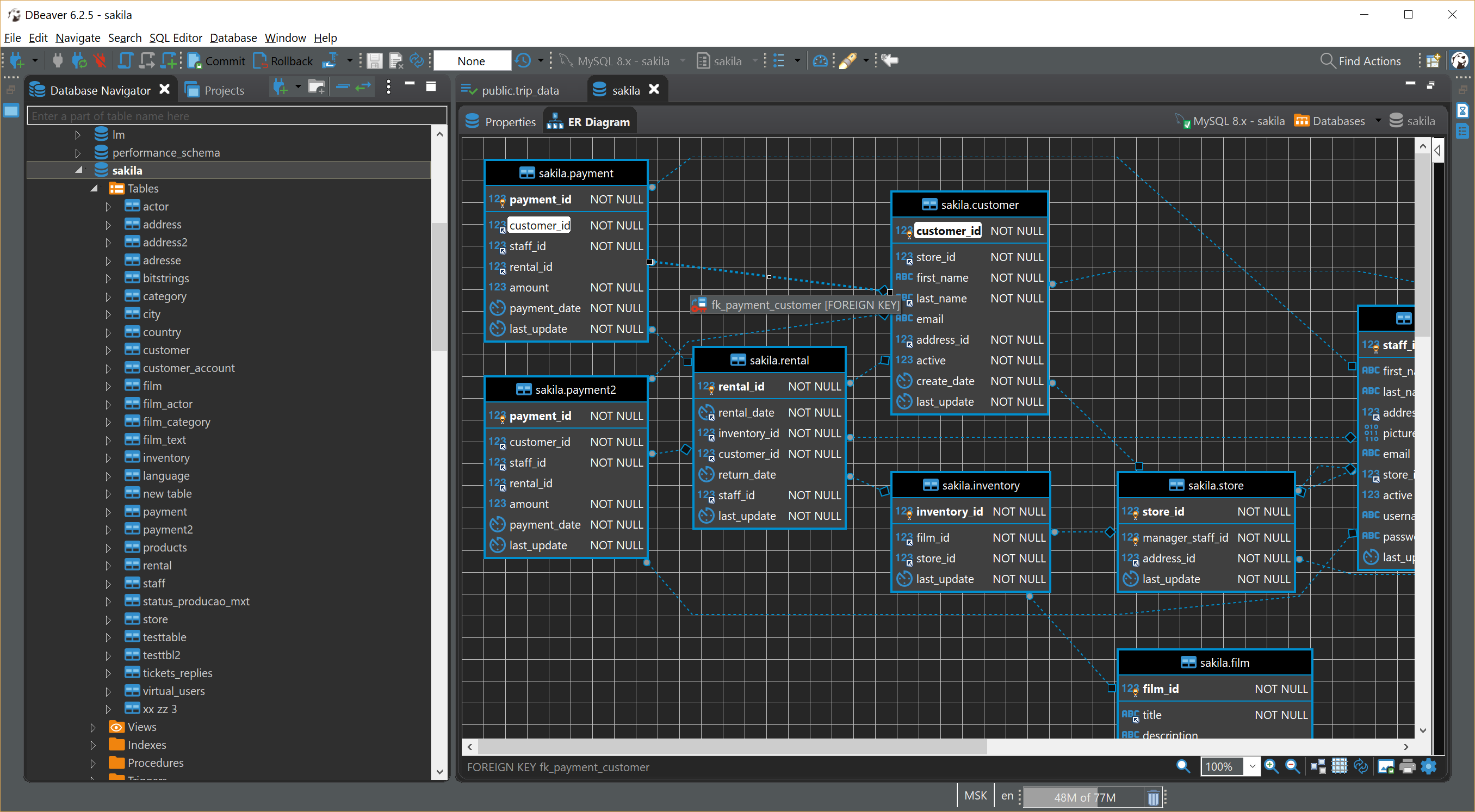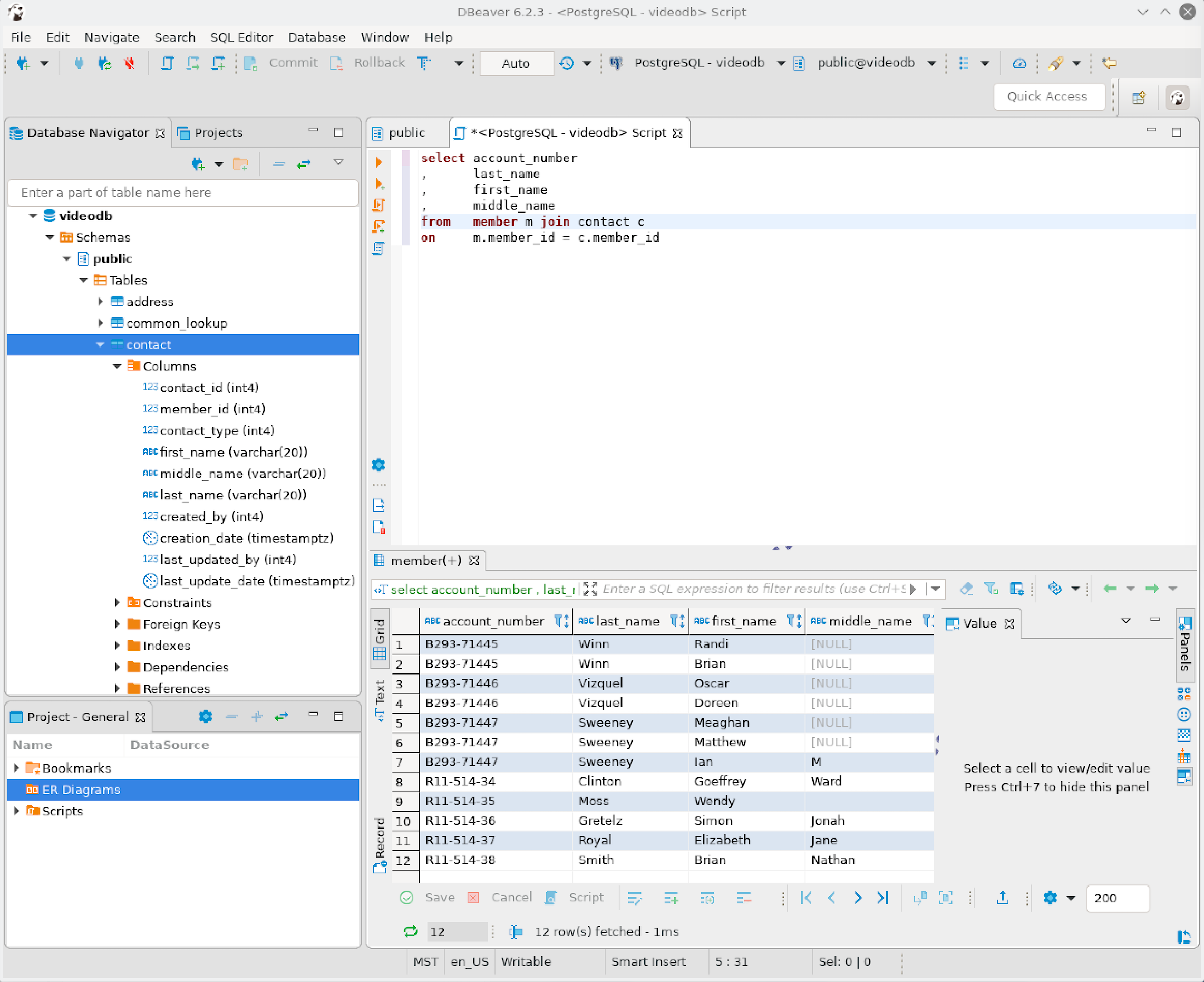

To do this, go to the Project Explorer, right-click on the ER diagrams and select Create New ER Diagram. With DBeaver, you can both view diagrams for existing schemas, and create your own custom ERD using Diagram Create Wizard. To display the changes you have applied you need to reopen your ERD. Select the checkboxes you need and click the “Apply and close” button. This can be useful if you want to quickly view more information about data stored in tables without going to Properties. For example, you can show data types and metadata for each column. To do this, you need to click on the Gear button.

For example, if you want to organize your diagram better, you can turn on the toggle grid and arrange the entities more evenly.įor each of the entities, you can quickly view the properties by clicking on the corresponding button.įor the convenience of working with large diagrams, you can click the Outline button and see a preview of the entire ERD with the ability to quickly navigate through it.ĭiagrams in DBeaver are highly customizable as you can change the look of your ERD based on your personal needs. Click on the line connecting the tables to see the highlighted keys in both of them.īy double-clicking on the desired table in the ERD, you can go to the Data Editor to view or change the data or metadata.ĮRD in DBeaver has a large number of display settings, which you can find in the bottom toolbar. By opening the diagram, you can understand exactly which database tables are related to each other and what types of relationships are used for this. One of the main advantages of diagrams is that they allow you to quickly navigate through the database schema. But please note that there is no relationship between views, so they are always displayed separately.ĭBeaver’s ERD are useful in two main cases, which we will cover in this article. In the same way as for a database table, you can open the ERD for any view by double-clicking on it. Each relationship is represented with circles (for “one-to-many” cases) and diamonds (for “one-to-one” cases). Otherwise the diagram displays a solid line. If the foreign key can be NULL, a dashed line is used. Thanks to this, you can immediately see which column is the key and whether there is a key at all.Īll relationships between tables are shown as lines. If the table has a primary key, it will be shown at the top and will be in bold. You can do the same for any individual table, in which case you will see the tables that the chosen one is linked with.Įntities are displayed on the diagram as rectangles. You need to double click on the schema and go to the ERD tab to see the diagram for all the tables and views. So by showing relationships among tables, the ER diagram represents the complete logical structure of a database.ĭBeaver allows you to view diagrams for any objects: tables, views, and even entire database schemes. In terms of a database management system, an entity is a table. for a SSL connection (usually port 31001): for a non SSL connection (usually port 31000): with Ok.An Entity Relationship (ER) Diagram is a type of flowchart that illustrates how entities relate to each other within a system.The JDBC Url differs for encrypted/unencrypted connections: Open the Settings tab and provide the URL and default port that suits the configuration of the Data Virtuality Server you want to connect to:
Dbeaver driver#
You can download a JDBC driver matching your Data Virtuality Server version from your own Data Virtuality Server instance or from the Data Virtuality Driver download page. Open the Libraries tab and provide the location of Data Virtuality JDBC driver:

Connector setupĬreate a new DB connection in DBeaver, select SQL from the tabbed menu on the left-hand side, and then select Data Virtuality: It runs on any platform and supports any database with a JDBC driver.
Dbeaver free#
DBeaver is free and open source database tool for developers and database administrators.


 0 kommentar(er)
0 kommentar(er)
